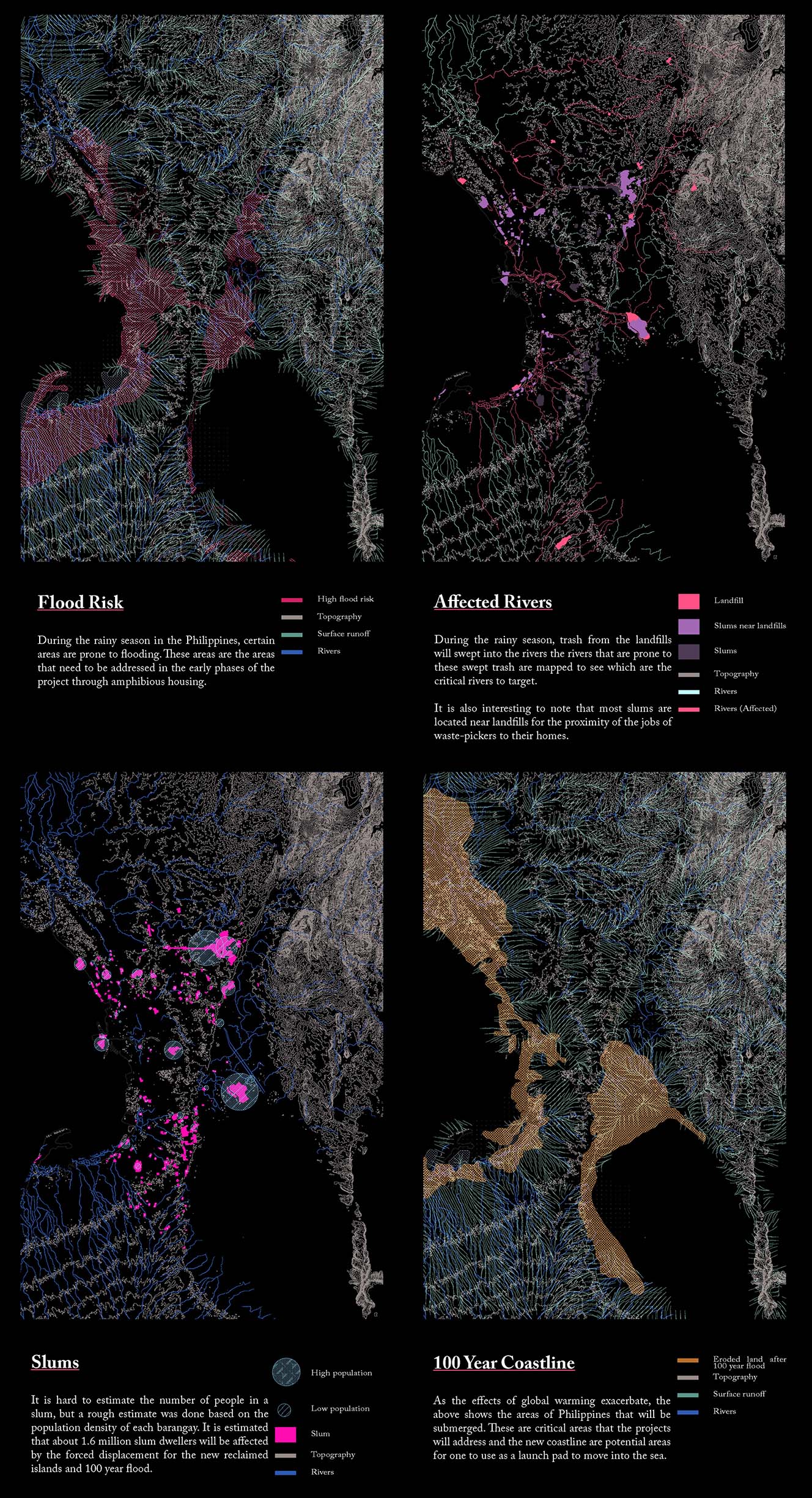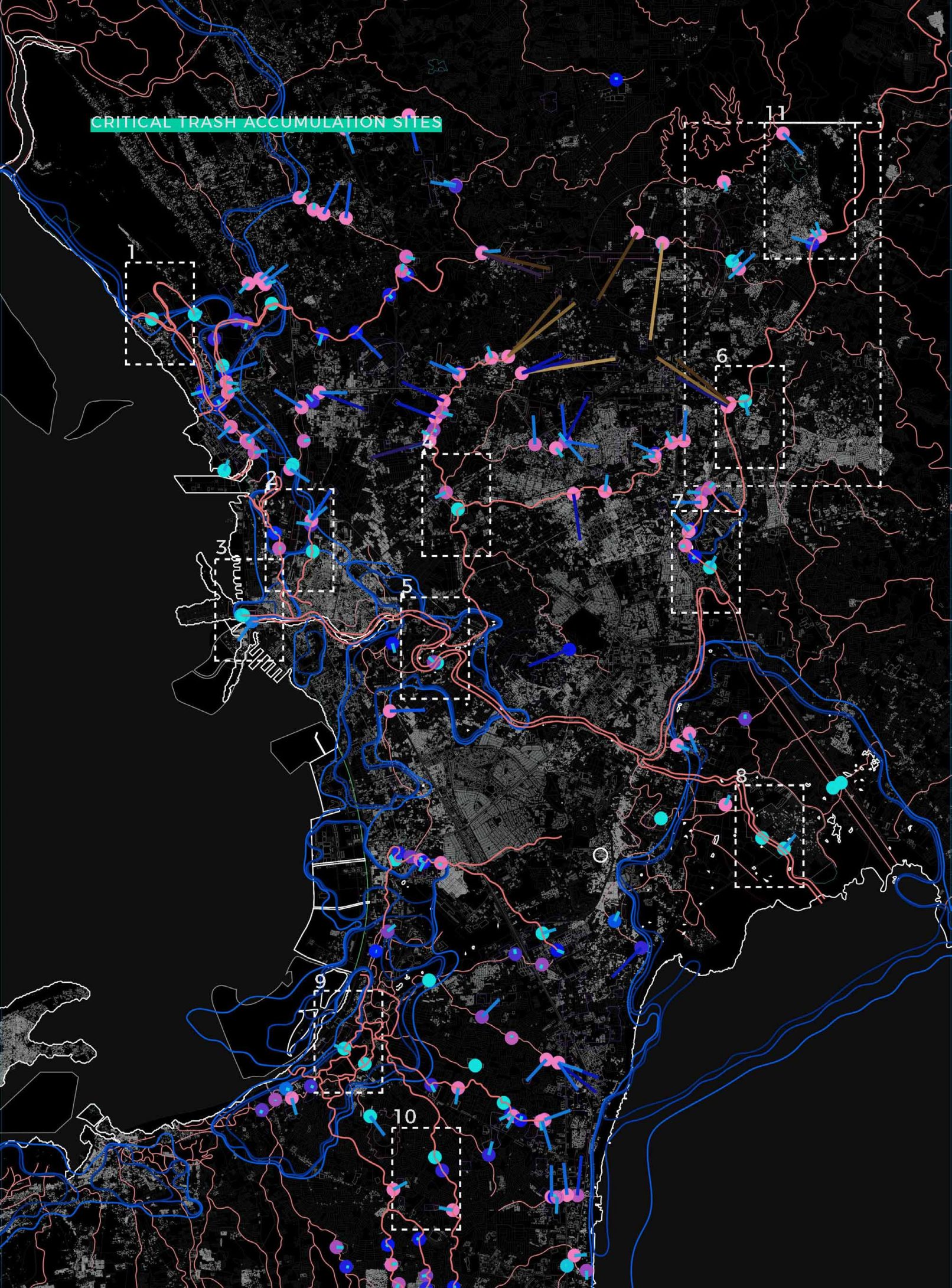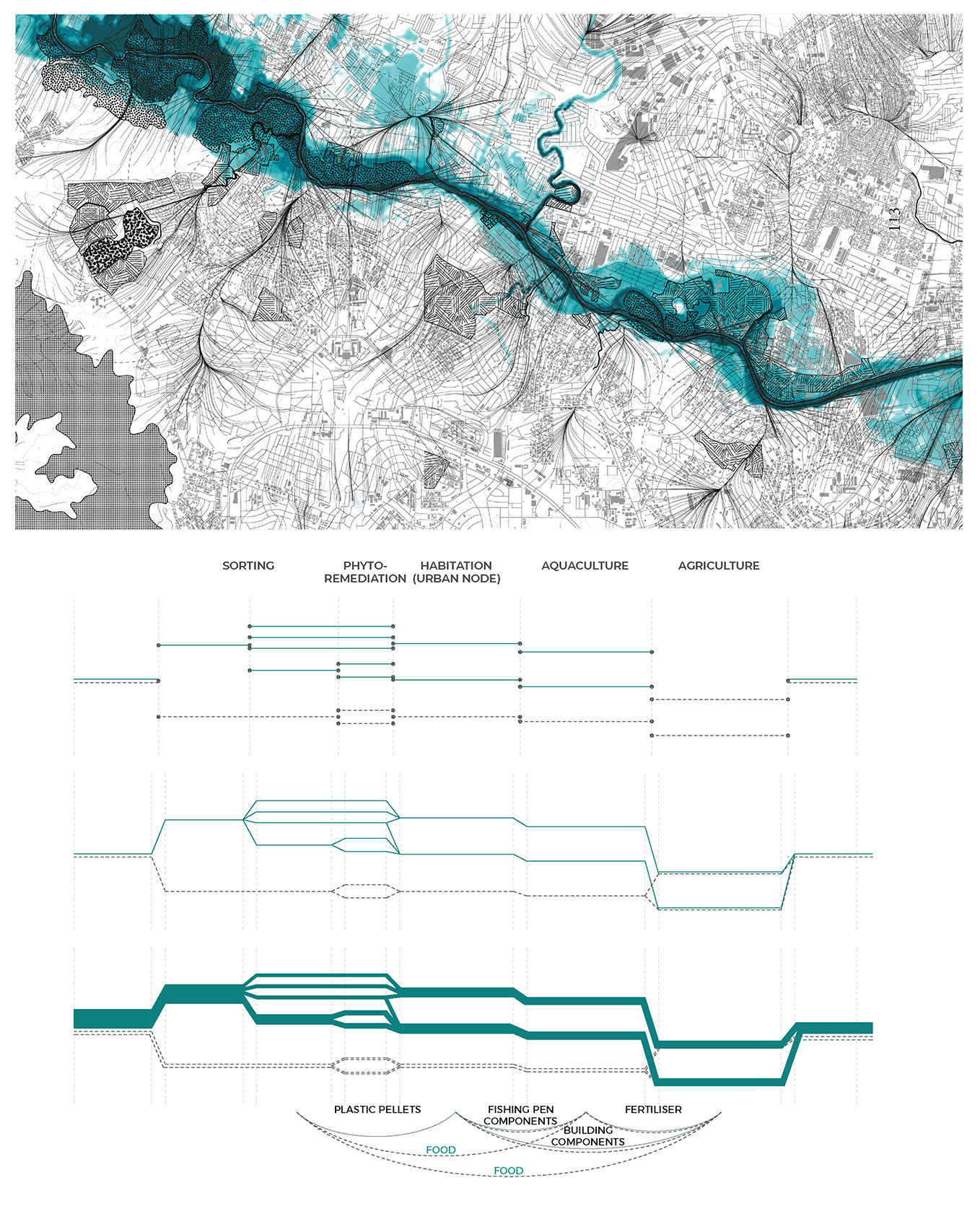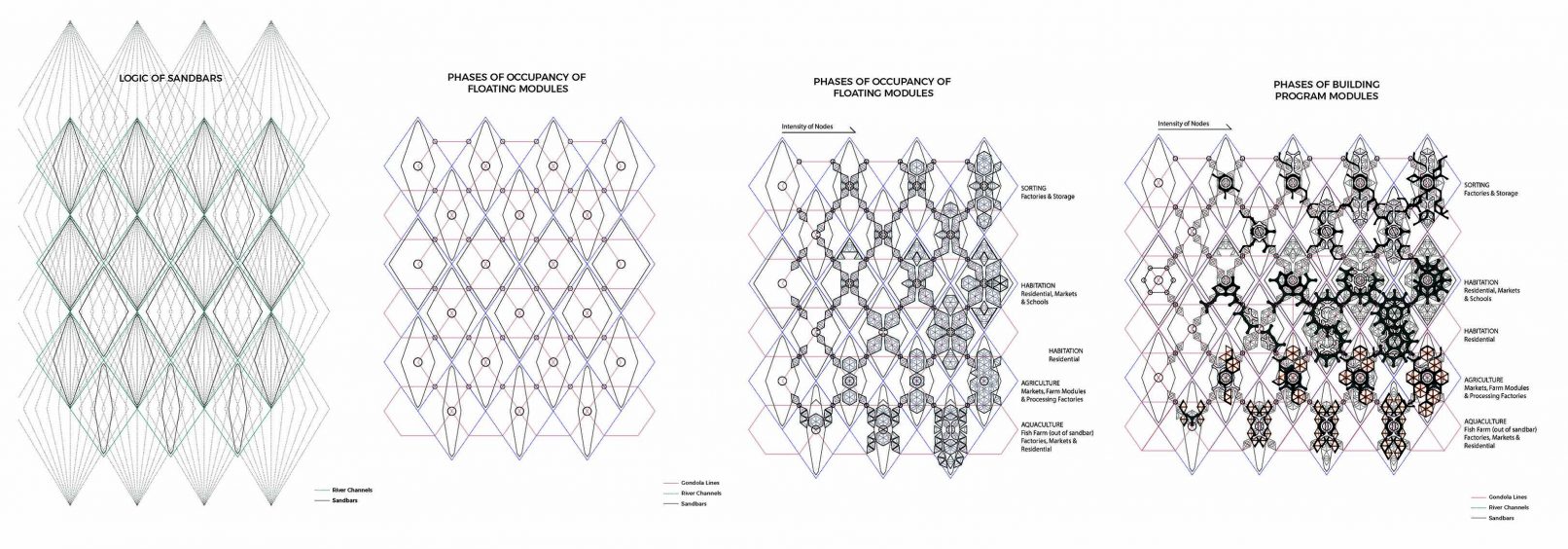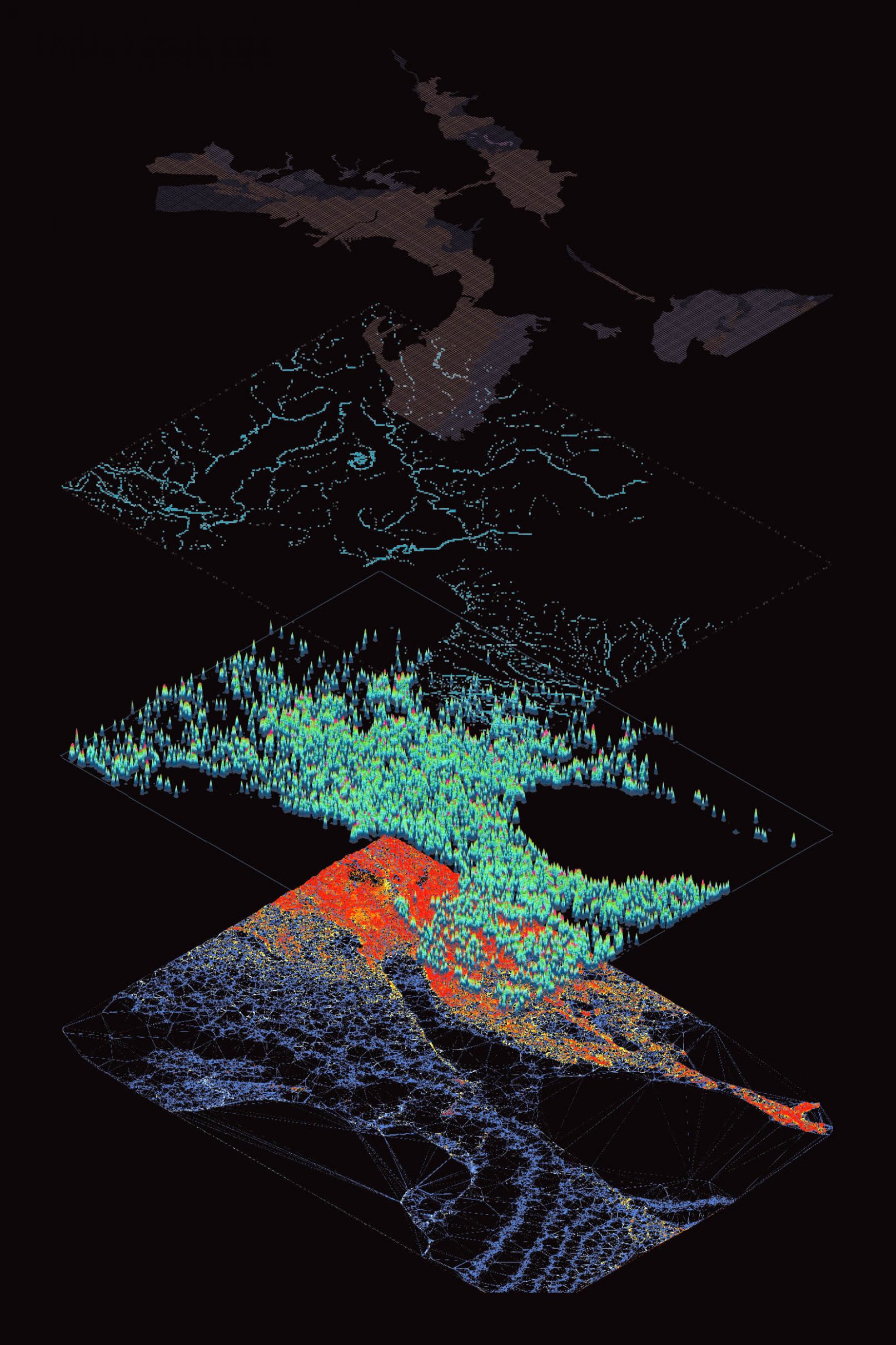2019_SCS_G3
[Group 3: “Plas·tic·i·ty”] LAT/LON: Manila_14.7003N_121.1196E
Part of “[Mapping the Invisible Iteration 2] “Form Axioms: Design Strategies in and around South China Sea”
Credits
Advanced Option Studio, Spring Semester 2019. Singapore University of Technology and Design (SUTD_ASD).
Tutors: Eva Castro and Federico Ruberto.
Students: Chow Khoi Rong (Clara), Lee Huimin (Denise).
[Students’ Text] Many of the world’s coasts are becoming increasingly urban, with two-fifths of cities with populations of 1 million to 10 million people are located near coastlines. Coastal settlements have always been attractive due to its provision of critical inputs to industries , despite the many threats — floods, typhoons tsunamis etc. it brings. With the South-east Asian market expected to become the 5th largest economy by 2020, migration from rural to urban areas is set to increase, putting a strain on existing infrastructures within the cities. One of which is the solid waste disposal and recycling infrastructures within these SEA’s developing nations. Inadequate waste disposal management has resulted in poorly managed landfills with waste being washed into waters during the rainy seasons, jeopardising the environment and local communities (typically the most vulnerable) that depend on it. This project hopes to explore the nature of plastics, whilst creating an infrastructural network that varies with environmental conditions in order to create resilience in the coastal region.




